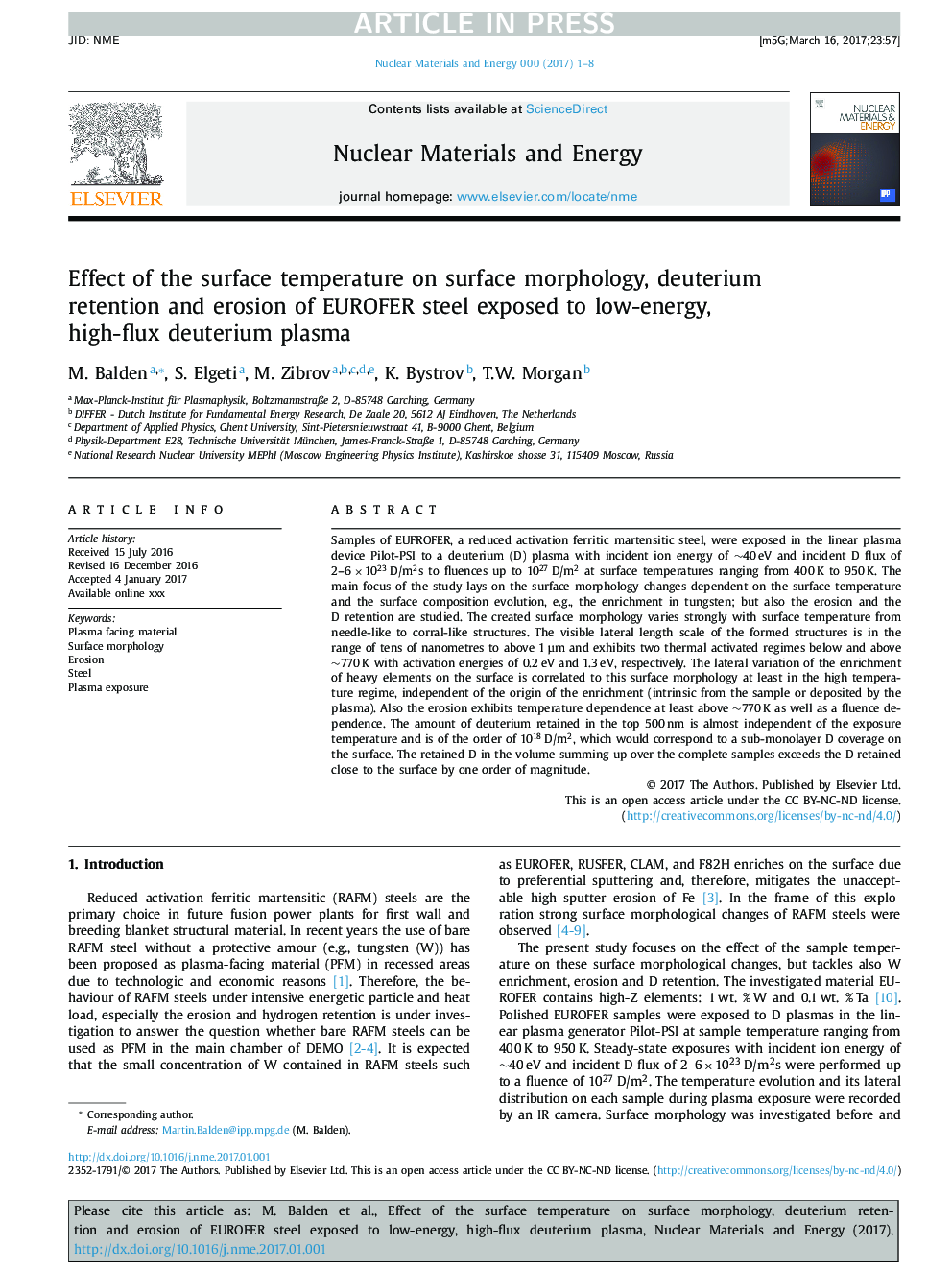| Article ID | Journal | Published Year | Pages | File Type |
|---|---|---|---|---|
| 7987460 | Nuclear Materials and Energy | 2017 | 8 Pages |
Abstract
Samples of EUFROFER, a reduced activation ferritic martensitic steel, were exposed in the linear plasma device Pilot-PSI to a deuterium (D) plasma with incident ion energy of â¼40 eV and incident D flux of 2-6 Ã 1023 D/m2s to fluences up to 1027 D/m2 at surface temperatures ranging from 400 K to 950 K. The main focus of the study lays on the surface morphology changes dependent on the surface temperature and the surface composition evolution, e.g., the enrichment in tungsten; but also the erosion and the D retention are studied. The created surface morphology varies strongly with surface temperature from needle-like to corral-like structures. The visible lateral length scale of the formed structures is in the range of tens of nanometres to above 1 µm and exhibits two thermal activated regimes below and above â¼770 K with activation energies of 0.2 eV and 1.3 eV, respectively. The lateral variation of the enrichment of heavy elements on the surface is correlated to this surface morphology at least in the high temperature regime, independent of the origin of the enrichment (intrinsic from the sample or deposited by the plasma). Also the erosion exhibits temperature dependence at least above â¼770 K as well as a fluence dependence. The amount of deuterium retained in the top 500 nm is almost independent of the exposure temperature and is of the order of 1018 D/m2, which would correspond to a sub-monolayer D coverage on the surface. The retained D in the volume summing up over the complete samples exceeds the D retained close to the surface by one order of magnitude.
Related Topics
Physical Sciences and Engineering
Energy
Nuclear Energy and Engineering
Authors
M. Balden, S. Elgeti, M. Zibrov, K. Bystrov, T.W. Morgan,
